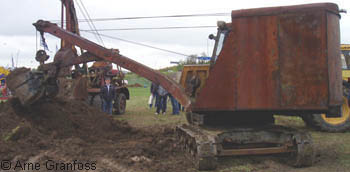Refugees from the Baltic region

 UNDER CONSTRUCTION Version 0.41
UNDER CONSTRUCTION Version 0.41
|
Sweden in World War II - across borders
|
 |
![]()
![]()
Around 20 Estonian-Swedish persons joined Waffen-SS, but most of them deserted and fled as civilians to Sweden in 1944. Some of them had been encouraged to flee to Sweden by a Swede who was their company commander. For some the boat journey took a week. [s50]
(Short about "estlandssvenskar" - Estonian-Swedish: In 1561-1710 a number of Swedish-speaking persons moved from todays Sweden and Finland to Estonia, foremost settling in the northwestern area. A large group of their descendants were in 1781 forced to move to Ukraina, where they established the village Gammelsvenskby. After 1939 many of those who lived in Estonia moved to Sweden, and in 1943-1944 7,920 persons arrived. [s25] )
![]()
![]()
During WW2 333 foreign planes came to Sweden, in various conditions. Closer to 160 of them had connection to German forces. Some landed after technical problems or navigation errors, others crashed, about a dozen were forced to land or shut down by Swedish anti-aircraft or planes. [s77]
From 21 September to 13 October 1944 the book lists a concentration of refugees from Estonia - 19 persons in 6 planes. Also 2 Latvian refugees in one plane. [s77]
Estonians and Latvians who left their German units and flew to Sweden in the autumn of 1944, were regarded as civilian refugees. They were not interned. [s77]
![]()
Tens of thousands of refugees from the Baltic region arrived in Sweden in 1944, foremost to the island Gotland. [s06]
In 1944 some 36 000 refugees from Estonia, Latvia and Lithuania had got asylum in Sweden. [s19]
Around 6,500 Estonian-Swedish persons were in Sweden at 1 December 1944. Some had come after Swedish initiative and with Swedish help. At the time there were also another 25,000 refugees from the Baltic countries, foremost from Estonia. [s60]
![]()
Sometimes refugees got help from the Swedish navy. In the morning of 26 September 1944 the destroyer "Gävle" sighted a drifting 10-12 metres long boat, in bad weather. During the operation the waves damaged a stand for depth charges so some bombs rolled around on the deck, and the hatches to two rooms in the aft were damaged so that the rooms got filled with water. 51 refugees were rescued. [s71]
![]()
Before the end of World War II, Sweden had agreed with the Allies that all refugees in Sweden who had arrived in German uniforms should be
sent back to their home countries. In June 1945 the Soviet Union demanded that Sweden should send back all these refugees.
The Swedish king Gustav V sent a personal appeal to Stalin, but it was rejected. [s28]
Sweden felt the need to follow the agreement. 145 citizens from the Baltic countries were forced to leave Sweden in late January 1946, after strong protests in Sweden. [s28]
Read more on the page "German soldiers in Sweden", at the bottom of the page.
![]()
2019-04-07. www.granfoss.se. Text/pictures: Arne Granfoss